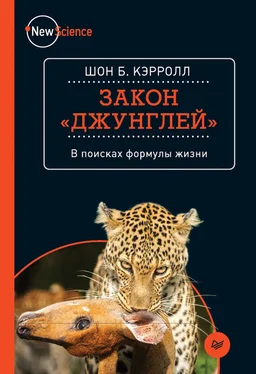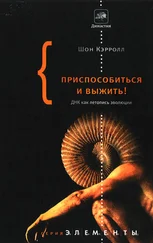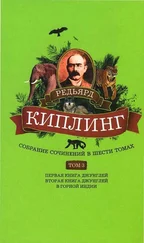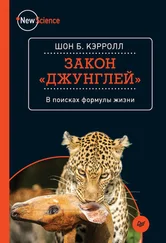Estes, J. A., C. H. Peterson, and R. S. Steneck (2010) “Some Effects of Apex Predators in Higher-Latitude Coastal Oceans.” In J. Terborgh and J. A. Estes (eds.), Trophic Cascades: Predators, Prey, and the Changing Dynamics of Nature . Washington, DC: Island Press: 37–53.
Estes, J. A., M. T. Tinker, T. M. Williams, and D. F. Doak (1998) “Killer Whale Predation on Sea Otters Linking Oceanic and Nearshore Ecosystems.” Science 282: 473–476.
Everly, G. S., and J. M. Lating (2013) A Clinical Guide to the Treatment of the Human Stress Response . New York: Springer.
Finger, S. (1994) Origins of Neuroscience: A History of Explorations into Brain Function . New York: Oxford University Press.
Fleming, D. (1984) “Walter B. Cannon and Homeostasis.” Social Research 51(3): 609–640.
Foege, W. H. (2011) House on Fire: The Fight to Eradicate Smallpox . Berkeley: University of California Press.
Friend, S. H., R. Bernards, S. Rogelj, R. A. Weinberg, et al. (1986) “A Human DNA Segment with Properties of the Gene that Predisposes to Retinoblastoma and Osteosarcoma.” Nature 323: 643–646.
Fryxell, J. M., J. Greever, and A. R. E. Sinclair (1988) “Why Are Migratory Ungulates So Abundant?” American Naturalist 131(6): 781–798.
Giacinti, C., and A. Giordano (2006) “RB and Cell Cycle Progression.” Oncogene 25: 5220–5227.
Gnanamanickam, S. S. (2009) “Rice and Its Importance to Human Life.” In Biological Control of Rice Diseases . Dordrecht: Springer: 1–11.
Goldstein, D. S. (2010) “Adrenal Responses to Stress.” Cellular and Molecular Neurobiology 30(8): 1433–1440.
Goldstein, D. S., and M. S. Brown (1973) “Familial Hypercholesterolemia: Identification of a Defect in the Regulation of 3-Hydroxy-3-Methylglutaryl Coenzyme A Reductase Activity Associated with Overproduction of Cholesterol.” Proceedings of the National Academy of Sciences USA 70(10): 2804–2808.
– – (1974) “Familial Hypercholesterolemia: Defective Binding of Lipoproteins to Cultured Fibroblasts Associated with Impaired Regulation of 3-Hydroxy-3-Methylglutaryl Coenzyme A Reductase Activity.” Proceedings of the National Academy of Sciences USA 71(3): 788–792.
– – (2003) “Cholesterol: A Century of Research.” HHMI Bulletin , September: 10–19. Available at http://www4.utsouthwestern.edu/moleculargenetics/pdf/msb_cur_res/2003%20HHMI%20Bulletin%20Goldstein%2018.htm.
Gordon, S. (1922) Amid Snowy Wastes: Wild Life on the Spitsbergen Archipelago . New York: Cassell and Company.
Gould, R. G., C. B. Taylor, J. S. Hagerman, I. Warner, and D. J. Campbell (1953) “Cholesterol Metabolism: I. Effect of Dietary Cholesterol on the Synthesis of Cholesterol in Dog Tissue in Vitro.” Journal of Biological Chemistry 201: 519–528.
Gourevitch, P. (2009) “The Monkey and the Fish.” New Yorker , December 21: 99–111.
Greenberg, M. J., W. F. Herrnkind, and F. C. Coleman (2010) “Evolution of the Florida State University Coastal and Marine Laboratory.” Gulf of Mexico Science 1–2: 149–163.
Grimsdell, J. J. R. (1979) “Changes in Populations of Resident Ungulates.” In A. R. E. Sinclair and M. Norton-Griffiths (eds.), Serengeti, Dynamics of an Ecosystem . Chicago: University of Chicago Press: 353–359.
Groffen, J., J. R. Stephenson, N. Heisterkamp, A. de Klein, et al. (1984) “Philadelphia Chromosomal Breakpoints Are Clustered within a Limited Region, bcr, on Chromosome 22.” Cell 36: 93–99.
Grzimek, B., and M. Grzimek (1961) Serengeti Shall Not Die . New York: E. P. Dutton & Co.
Grzimek, M., and B. Grzimek (1960) “Census of Plains Animals in the Serengeti National Park, Tanganyika.” Journal of Wildlife Management 24(1): 27–37.
Hairston, N. G. (1989) Ecological Experiments: Purpose, Design and Execution . Cambridge: Cambridge University Press.
Hairston, N. G., F. E. Smith, and L. B. Slobodkin (1960) “Community Structure, Population Control, and Competition.” American Naturalist 94(879): 421–425.
Hanby, J. P., and J. D. Bygott (1979) “Population Changes in Lions and Other Predators.” In A. R. E. Sinclair and M. Norton-Griffiths (eds.), Serengeti, Dynamics of an Ecosystem . Chicago: University of Chicago Press: 249–262.
Havel, R. J., D. B Hunninghake, D. R. Illingworth, R. S. Lees, et al. (1987) “Lovastatin (Mevinolin) in the Treatment of Heterozygous Familial Hypercholesterolemia: A Multicenter Study.” Annals of Internal Medicine 107(5): 609–615.
Hehlmann, R., M. C. Müller, M. Lauseker, B. Hanfstein, et al. (2014) “Deep Molecular Response Is Reached by the Majority of Patients Treated with Imatinib, Predicts Survival, and Is Achieved More Quickly by Optimized High-Dose Imatinib: Results from the Randomized CML-Study IV.” Journal of Clinical Oncology 32: 415–423.
Heinrichs, E. A. (1979) “Chemical Control of the Brown Planthopper.” In Brown Planthopper: Threat to Rice Production in Asia . Los Baños, Philippines: International Rice Research Institute: 145–167.
Heisterkamp, N., and J. Groffen (2002) “Philadelphia-Positive Leukemia: A Personal Perspective.” Oncogene 21: 8536–8540.
Henderson, D. A. (2011) “On the Eradication of Smallpox and the Beginning of a Public Health Career.” Public Health Reviews 33: 19–29.
Hogness, D., M. Cohn, and J. Monod (1955) “Studies on the Induced Synthesis of β-galactosidase in Escherichia coli: The Kinetics and Mechanism of SulfurIncorporation.” Biochimica et Biophysica Acta 16: 99–116.
Hopkins, J. W. (1989) The Eradication of Smallpox: Organizational Learning and Innovation in International Health . Boulder, Colorado: Westview Press.
Huxley, J. (1931) Africa View . London: Chatto & Windus.
Jacob, F. (1973) The Logic of Life: A History of Heredity . New York: Pantheon Books.
– – (1988) The Statue Within . New York: Basic Books.
Jacob F., and J. Monod (1963) “Elements of Regulatory Circuits in Bacteria.” In R. J. C. Harriss (ed.), Biological Organization at the Cellular and Supercellular Level ; A Symposium Held at Varenna, 24–27 September, 1962, under the Auspices of UNESCO. London and New York: Academic Press: 1–24.
Johnson, B. M., and M. D. Staggs. (1992) “The Fishery.” In J. F. Kitchell (ed.), Food Web Management: A Case Study of Lake Mendota . New York: Springer-Verlag: 353–376.
Johnson, B. M., S. J. Gilbert, R. S. S. Stewart, L. G. Rudstam, et al. (1992) “Piscivores and Their Prey.” In J. F. Kitchell (ed.), Food Web Management: A Case Study of Lake Mendota . New York: Springer-Verlag: 319–352.
Judson, H. F. (1979) The Eighth Day of Creation: The Makers of the Revolution in Biology . New York: Simon and Schuster.
Kantarjian, H., S. O’Brien, E. Jabbour, G. Garcia-Manero, et al. (2012) “Improved Survival in Chronic Myeloid Leukemia Since the Introduction of Imatinib Therapy: A Single-Institution Historical Experience.” Blood 119(9): 1981–1987.
Kenmore, P. E., F. O. Carino, C. A. Perez, V. A. Dyck, and A. P. Gutierrez (1984) “Population Regulation of the Rice Brown Planthopper (Nilaparvata lugens Stål) within Rice Fields in the Philippines.” Journal of Plant Protection in the Tropics 1: 19–37.
Keys, A. (1990) “Recollections of Pioneers in Nutrition: From Starvation to Cholesterol.” Journal of the American College of Nutrition 9(4): 288–291.
Keys, A., H. L. Taylor, H. Blackburn, J. Brozek, et al. (1963) “Coronary Heart Disease among Minnesota Business and Professional Men Followed Fifteen Years.” Circulation 28: 381–395.
Читать дальше
Конец ознакомительного отрывка
Купить книгу











